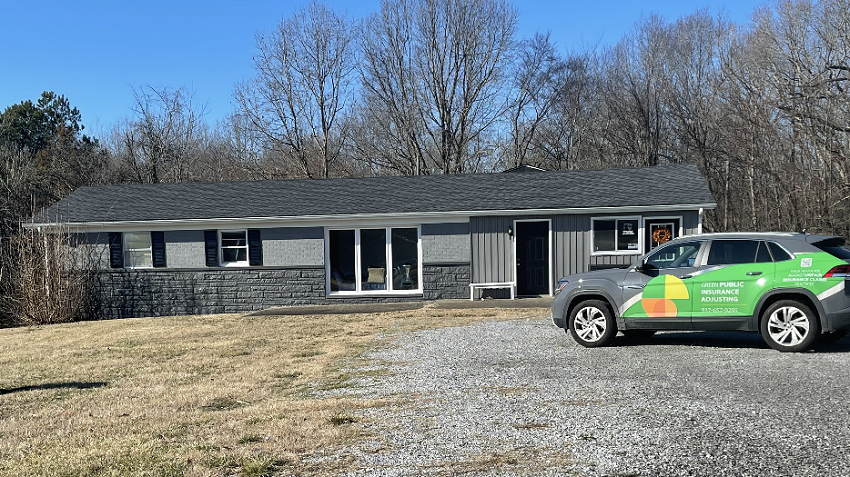A recent case involving a local Ohio hotel has brought to light a growing issue in property insurance litigation — the discovery that the “insurer” named on a policy may not be a single company at all, but rather a consortium of group risk insurance carriers operating under a pooled identity.
In this case, the policyholder suffered storm-related damage in March 2023. Negotiations began directly with the third-party administrator (TPA) adjuster and continued through November 2023. By February 2024, the hotel retained public adjusting services tasked with formally identifying the storm date, prepare supporting documentation, and submit the required Sworn Proof of Loss on the carrier’s form.
The claim was referred to outside counsel to protect the insured’s right of recovery given the policy contained a 12-month Suit Limitation provision. That’s when the real complexity began to surface.
The Problem: Who Is the Actual Insurer?
The carrier listed on the declarations page is not a single insurer. Instead, it’s a collective group of roughly 20+ insurers underwriting risks jointly under a single name. To properly name the defendants, the litigation may be required to include all 20 member insurers.
That discovery presents a major procedural challenge. Courts generally require that a lawsuit name the correct defendant — the actual entity holding the contractual obligation. If the named “carrier” is merely an umbrella group without distinct legal identity, the case may be vulnerable to dismissal for improper party designation.
Indeed, a recent Pennsylvania case involving the same issue reportedly resulted in dismissal, with the court siding with the defense — reinforcing that failure to name all participating insurers rendered the complaint defective.
The Dilemma: Who Bears the Duty to Verify the Insurer’s Structure?
This raises an important question for the public adjusting community: Whose responsibility is it to verify the insurer’s corporate structure?
The Public Adjuster’s Perspective
A public adjuster’s duty is to identify the insurer as listed on the policy and act within the terms of the written contract. Adjusters are not typically expected to investigate ownership or syndicate arrangements beyond what the policy discloses.
However, in complex or “pooled” insurance arrangements — such as surplus lines, Lloyd’s syndicates, or risk-sharing groups like this carrier — a prudent adjuster may flag the issue early and recommend that counsel or the policyholder’s agent confirm the carrier’s proper legal identity.
This step can prevent future complications when a claim transitions to litigation.
The Agent’s or Carrier’s Role
Insurance agents, brokers, and underwriters bear a greater duty to disclose the nature of the coverage entity. If the declarations page misleads the insured into believing they are contracting with a single company, questions of policy ambiguity or misrepresentation could arise.
In practice, though, these structures are rarely transparent — and policyholders seldom realize they’re dealing with multiple insurers or group risk insurance carriers until a dispute reaches court.
The Litigation Question: Should the Case Continue?
With litigation already filed in the Court of Common Pleas, and monies invested in legal preparation, the decision whether to proceed or withdraw depends on several factors:
- Magnitude of Recovery
The disputed amount may or may not justify the expense of re-filing or expanding the complaint to name 20 separate defendants. Legal costs could easily surpass the potential recovery.
- Procedural Feasibility
Locating, serving, and managing 20 different insurer defendants would be a logistical and financial burden. The risk of dismissal remains high unless the court accepts the carrier’s collective identity as a one legal entity.
- Judicial Precedent
Given the Pennsylvania ruling favoring the carrier, Ohio courts may follow similar reasoning. That precedent makes recovery less certain — especially without policy language explicitly identifying this group as a distinct insuring entity.
- Policyholder Fatigue and Cost
After a year of claim handling and mounting expenses, the hotel owner must weigh the likelihood of success against the costs of prolonged litigation. Sometimes, withdrawing and pursuing alternative avenues — such as negotiation or appraisal — can yield better outcomes.
Recommendations from a Public Adjuster’s Perspective
As a public adjuster, this situation underscores the importance of due diligence early in the claim process.
1. Verify the Insurer’s Identity
At intake, review the policy to confirm whether the listed insurer is a standalone company, a syndicate, or part of a reciprocal exchange. When in doubt, request clarification from the agent or state insurance department.
2. Document All Carrier Communications
If correspondence comes from a TPA, confirm whether the TPA acts on behalf of a single insurer or multiple entities. This can influence who is later named in litigation.
3. Coordinate with Legal Counsel Early
When policy ambiguity or multi-party risk sharing is suspected, refer the file to legal counsel before filing a Proof of Loss or initiating appraisal. This ensures the right parties are identified before legal action is required.
4. Manage Client Expectations
Policyholders should be advised that certain structural issues — especially in group-insured policies — can dramatically complicate recovery efforts, even when damages are legitimate.
Final Thoughts
Cases like this highlight the blurred lines between policy interpretation, claims handling, and litigation strategy. Public adjusters are not responsible for the insurer’s internal structure, but awareness of carrier identity and corporate composition can be the difference between a successful recovery and a procedural dead end.
For the Ohio hotel’s case, pursuing litigation remains technically possible — but not without risk. As the legal team evaluates whether to name all 20 insurers or withdraw, the lesson for adjusters is clear: always know who stands behind the policy before you go to battle.
Disclaimer
This article is for informational purposes only and reflects the professional perspective of licensed public adjusters. Green Public Insurance Adjusting and its employees are not attorneys and do not represent any law firm. Policyholders should consult qualified legal counsel regarding their specific rights and obligations under Ohio law.





